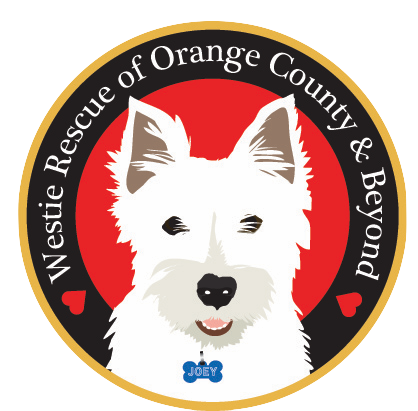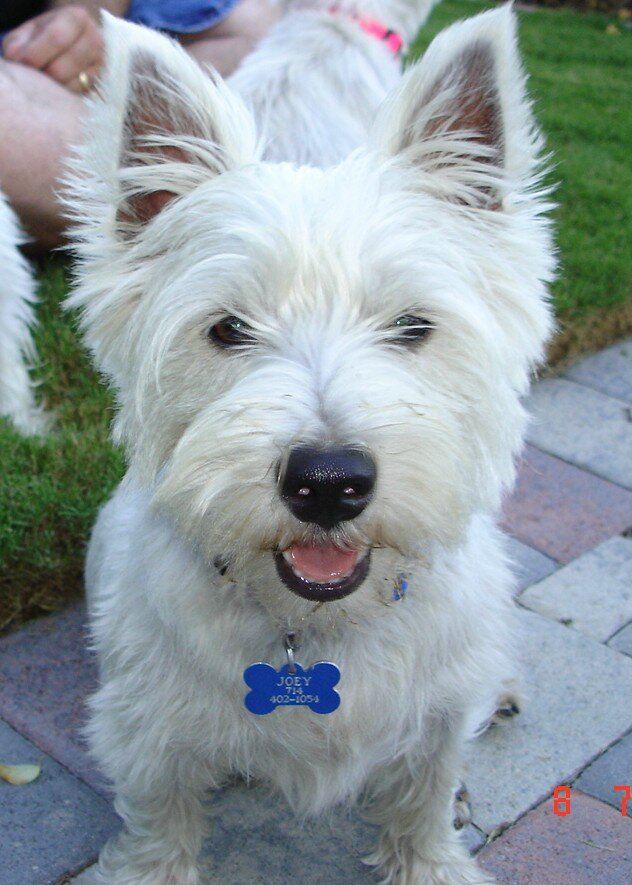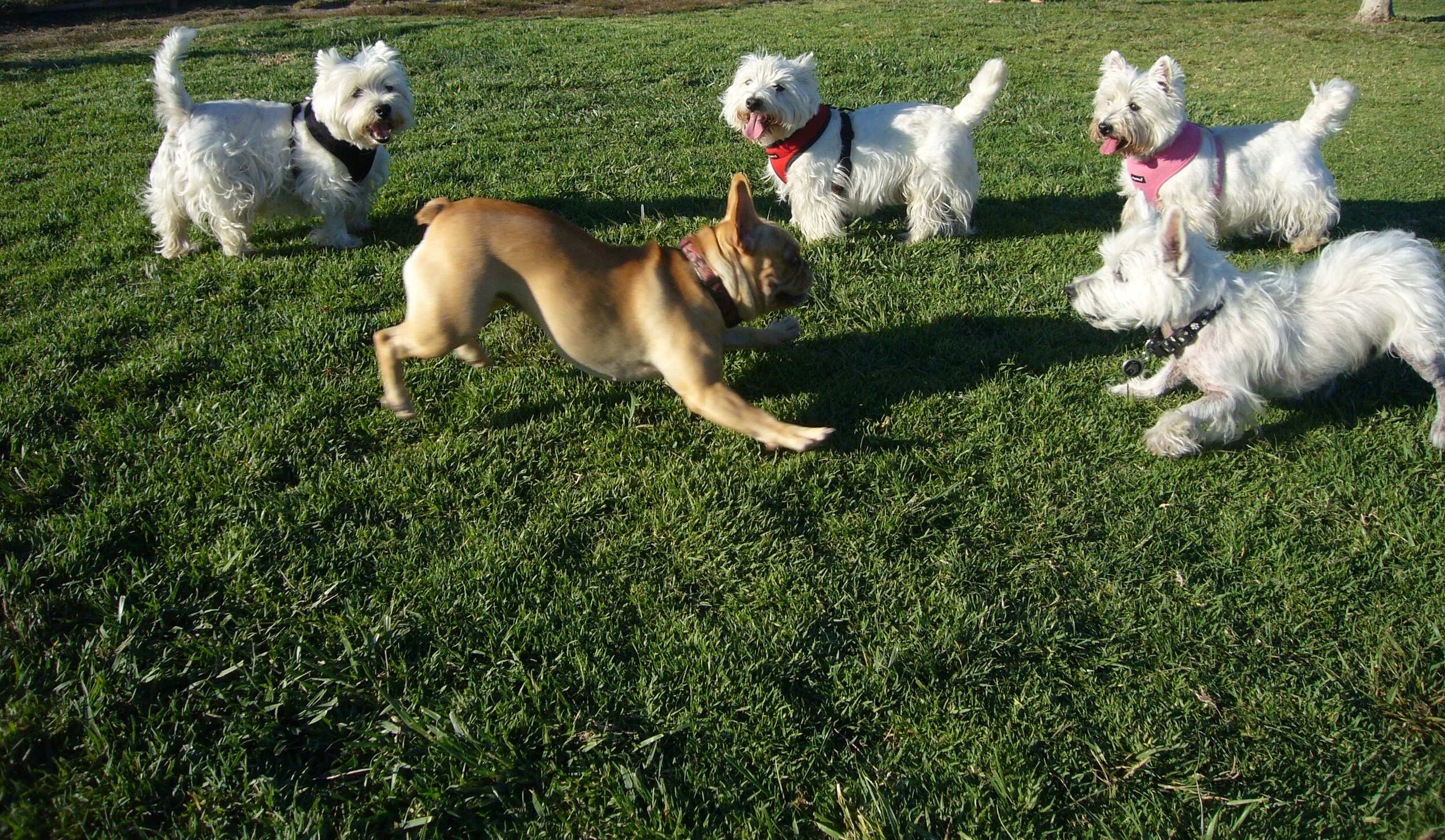
THE WESTIE DIET
Recipes from the Rescue Kitchen
These delicious recipes were developed exclusively by Westie Rescue of Orange County & Beyond and will tempt even the most finicky eater!
Dan’s Highlander Hash
INGREDIENTS:
½ pound ground turkey (you may also use salmon or tilapia)
1 raw carrot, quartered and chopped into ¼ inch slices
1 raw zucchini, quartered and chopped into ¼ inch slices
1 raw yellow squash, quartered and chopped into ¼ inch slices
1 medium apple, cored & chopped into ¼ inch slices
2 Tbsps chopped fresh parsley & ½ tsp ground turmeric
DIRECTIONS:
Brown ground turkey over medium heat in a 12 inch non-stick pan for 3-4 minutes, stirring constantly, breaking up the turkey. Add carrot, zucchini, squash, and apple. Cook 5 minutes, stirring frequently. Add parsley & turmeric and cook 2 minutes more, continuing to stir. Cool and serve. This recipe freezes well. We serve 1-2 Tbsps on top of 1/3 cup kibble.
Stanley’s Wild About Salmon
INGREDIENTS:
1/2 pound Alaskan Salmon Fillet
12 oz frozen peas & carrots
12 oz frozen cut green beans
DIRECTIONS:
Preheat oven at 350 degrees. Wrap salmon in foil and bake 20 minutes or until salmon becomes opaque and flakes easily. Steam frozen vegetables in a large pot. The water in the frozen vegetables will contribute to the steaming process. When done, shred the salmon with a fork, and mix with the vegetables.
Serve 1-2 Tbsp on 1/3 cup kibble per meal. Keep refrigerated and reheat in the microwave. This recipe freezes well
Perry’s No-peek Chicken & Rice
INGREDIENTS:
1 pound skinless/boneless chicken breast
8 cups chicken broth OR water OR vegetable broth
5 carrots chopped in 1/4 slices
3 stalks celery chopped in 1/4 slices
2 medium red potatoes (or white) cut in 1/4 cubes
2 cups uncooked brown rice
DIRECTIONS:
Place all ingredients except for brown rice in crockpot & cook on high for 1 1/2 hours. Remove chicken and shred, return to pot, add rice and cook another 1 1/2 hours. Remove from heat, stir & let cool for 1 hour before serving. This recipe freezes well and can be cut in half. Serve 1-2 Tbsp on top of 1/3 cup kibble.
About the Westie Diet
**One Size Does Not Fit All**
WROC has researched Westie diets extensively, consulting veterinarians, dieticians, and food experts. No single diet suits all Westies, as each dog has unique needs based on health, age, and activity level. Skin allergies, common in Westies, often require special diets avoiding beef, corn, wheat, brewer’s yeast, gluten, soy, meat or poultry by-products, unspecified meat meal, garlic, artificial colors, preservatives, dyes (Red 40, Red 3, Yellow 5, Yellow 6), vitamin pre-mixes, and propylene glycol. We continuously seek high-quality foods and adapt as better options emerge.
For senior and geriatric dogs, we prioritize antioxidant-rich, anti-inflammatory ingredients to combat inflammation, a major cause of disease. When using commercial food, supplement with anti-inflammatory whole foods high in antioxidants. Avoid low-quality grocery store foods, which may cause skin issues, dull coats, and health problems. Higher-priced foods often indicate better quality, but not always—check the top five ingredients for whole meats (e.g., chicken, beef, lamb, salmon) rather than vague "meat meal." Prescription diets, while expensive, are for specific health conditions. Always research ingredients and manufacturing processes to ensure quality.
**Are You Overfeeding?**
Obesity is a common issue in dogs, increasing risks of diabetes, liver problems, and joint pain. To assess your dog’s weight, you should feel their ribs and spine easily, see a defined waist from above, and notice a tummy tuck from the side. If not, your dog may be overweight. Most weight gain results from overfeeding or insufficient exercise, but medical conditions like hypothyroidism can contribute. If your dog shows unexplained appetite or weight increases, consult a vet to rule out health issues and determine weight loss needs. Genetics play a role, but overindulging with treats or human food is often the culprit. Limit treats, as they add calories quickly.
FAT IS NOT FIT
**Diet Adjustments**
Dogs’ nutritional needs vary by life stage. Young, active dogs need more energy, protein, and minerals than older ones. Add low-calorie, high-fiber foods like steamed green beans, or plain canned pumpkin to help your dog feel full with fewer calories. Reduce food by one-third to one-half until a healthy weight is reached. Adjust portions based on metabolism, exercise, age, and climate to maintain ideal weight.
**Choose Healthy Treats**
An active 18-pound dog needs about 605 kcal daily (420 kcal per cup). Two medium Milk-Bone treats add 80 kcal and contain by-products, salt, and artificial additives. Treats should be under 10% of daily calories. Opt for low-calorie options like baby carrots (3 kcal each), apple slices, or wheat-free treats with no corn, soy, artificial colors, flavors, hormones, antibiotics, preservatives, salt, or sugar. Choose brands like Ollie, Farmers Dog, Primal, Charlee Bear, or Happy Dog’s dehydrated chicken (80% protein, 3% fat). Avoid grocery store treats with poor-quality .
**Exercise**
Regular exercise burns calories, reduces appetite, and supports weight loss and maintenance. Increase activity to meet your dog’s caloric needs and promote a healthy weight.



